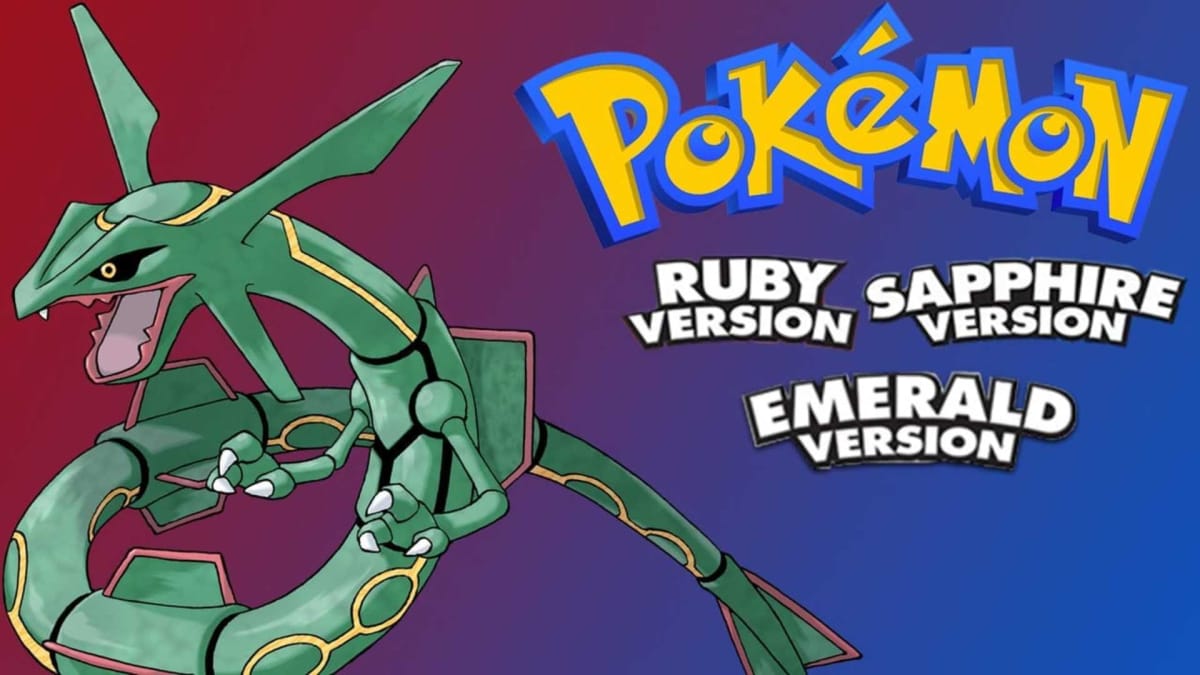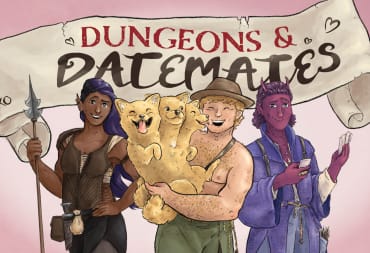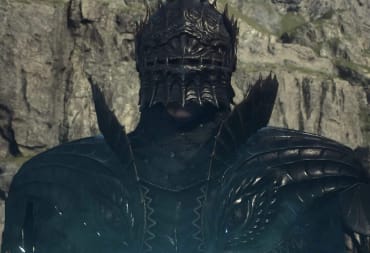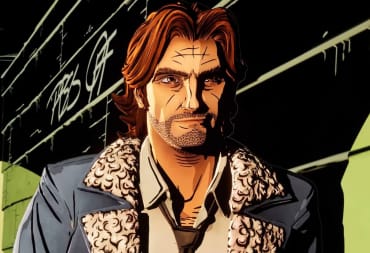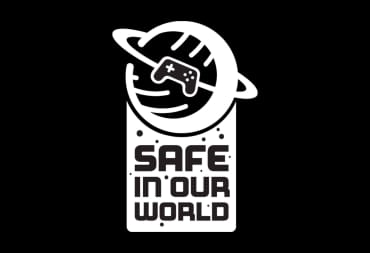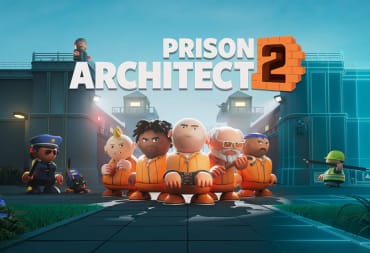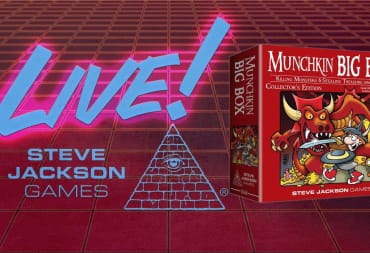Three months in already? Man, how time flies. It seems like only yesterday that Pokémon was just starting up—Oh, crap, sorry. I was getting some serious nostalgia there for a second. I’m getting caught up in my thoughts about the first two generations because I know that Generation III is around the corner, and I … don’t have a good relationship with it. I was not a fan.
This is part of an ongoing series. Be sure to check out previous entries in the Year of Pokémon!
To be honest, I’ve been worried about having to write this since starting the Year of Pokémon. It took me a while to even get started playing through this generation simply because of my bad experiences with it back in the day. Originally I played through Ruby Version, and after coming off of Gold Version I was just not into it as much as I expected to be. Thus, I set it aside and forgot about it … until today.
However, time can change a lot. My hope is to enjoy Generation III a lot more than I did originally. So, with that in mind, let’s take a ride on over to the Hoenn region and see what’s going on!
Pokémon Generation III - November 21st, 2002
Generation III includes: Ruby Version, Sapphire Version, Emerald Version
This review is based primarily on Emerald Version.
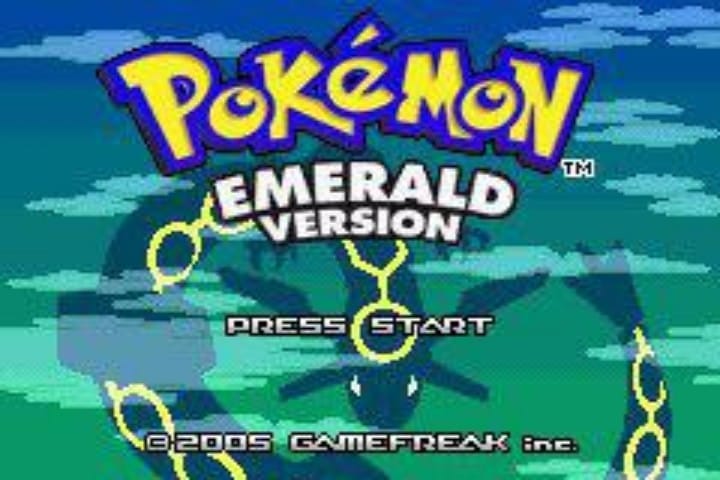
Story
“This is what we call a 'Pokémon'.”
Alright! Generation III is here and raring to go! It’s a new console, a new region, and a new story. Let’s jump right in!
... Sorry, I was just kidding. The story is going to be the shortest part of just about any of these reviews, since most of it is the same as you’ve come to expect. I can’t say it doesn’t make my job easier, but the truth is you already know how it goes.
You start off as a young boy or girl, and it’s time to start your adventure to challenge the Elite Four of the region. This time around, you don’t get to pick your Pokémon from the lab in town. Instead, Professor Birch finds himself set upon by a wild Pokémon and you have to grab one of his three Balls from his sack beside him in order to get a Pokémon to use. The choices this time are the Fire-type Torchic, the Grass-type Treecko, and the Meme-type Mudkip.
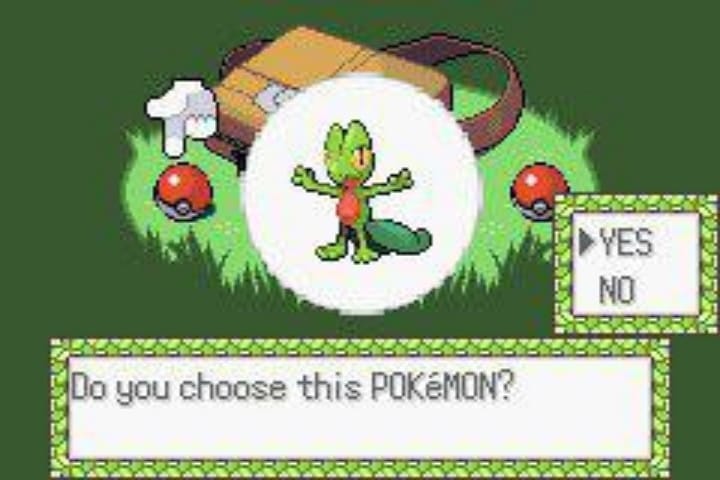
Look, I actually think Mudkip isn’t that bad, don’t get me wrong. However, there just might be too many puns and jokes in this review, so I showed some self-restraint and picked Treecko. The last thing I need is a meme-infested retrospective! So, with my choice made, it was time to save Professor Birch and finally get on my way.
One gym, two gym, red gym, blue gym. Oh, hey, look at that! Upon reaching the 5th gym, the leader you encounter is none other than your father. Apparently someone was too busy to help out around the house… But at least you get to prove you’re better than your old man when you smoke him handily and earn your fifth badge!
You know how this goes by now. However, the difference in Generation III is that unlike Team Rocket, there are two crazy teams to deal with. In the red corner, we have Team Magma, headed by Maxie! This team wants to terraform the Earth and use the legendary ground-type Groudon to cause a cataclysmic volcanic eruption in order to expand the land because their sense of self-preservation is astonishingly low.
In the blue corner, we have Team Aqua, headed by Archie! These seafaring folk think that the best way for Pokemon and humans to thrive is with more water. Thus, they’re attempting to use the legendary Kyogre to flood the world since apparently these guys saw Waterworld and thought “Hey, that seems alright.” Absolute psychos.
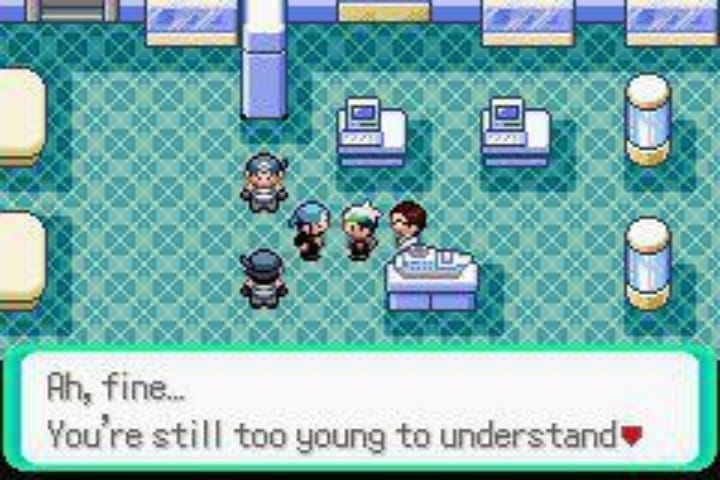
Spoilers for Generation III are beyond this point! Skip to the next bolded text to avoid spoilers!
While in Ruby and Sapphire you only fight one of the two, in Emerald you get to face off against both of them. Lucky you!
In this version, both Kyogre and Groudon are awakened. They have a catastrophic battle, which awakens yet another Pokémon, the Dragon/Flying-type Rayquaza. This fearsome beast quickly puts an end to the apocalyptic bickering between the two other legendaries, and you can then do battle to (hopefully) capture it afterward. Good luck, and make sure to save! This event causes Team Magma and Team Aqua to finally put aside their differences and stop being evil buttheads. How sweet!
Once this is over, you can continue on your journey. Before you know it, you’re at the Elite Four. You know how this goes: One by one, you gotta climb your way to the top. This time, it’s kind of a mishmash of typing from the first two generations. Generation III pits you against Dark user Sidney, Ghost user Phoebe, Ice user Glacia and finally, Dragon user Drake.
Naturally, this means you must fight the Champion next. However, this is different depending on your version! In Ruby and Sapphire Version, you’ll be facing Steven Stone, a Steel user. However, in Emerald Version, he’s been dethroned by former Gym Leader Wallace, a Water-type user from Sootopolis City. Honestly, that’s a pretty neat change, and helps set the games apart while allowing the different versions to give a sense of change over time.
So once again, you win! You’re the Champion, good job! So, what crazy adventures are next? Back to Johto? Kanto again?
… Sadly, no, and this is where Generation III drops the ball. After the crazy revelation of a double-size game last time, we’re stuck in one region this time. Get used to it, unfortunately. Even though it’s more normal to not have a huge endgame after Generation II, it stings a bit coming right off of it to Generation III. It’s a shame, really.
Spoilers end here! You can continue reading below!
So, that’s Generation III. Can you believe all those crazy differences that… weren’t there? For a new generation, I was hoping for a lot more to go with the jump to a new console. Unfortunately, it just wasn’t meant to be. However, for the story that is there, at least you have more than one threat to contend with which can be interesting at times. Also, making your dad a gym leader is a neat way to expand the story a little bit. It’s just not enough to be terribly enticing for me, sadly. For a series where by-the-numbers stories are the norm, Generation III’s plot manages to feel even more bland than usual.
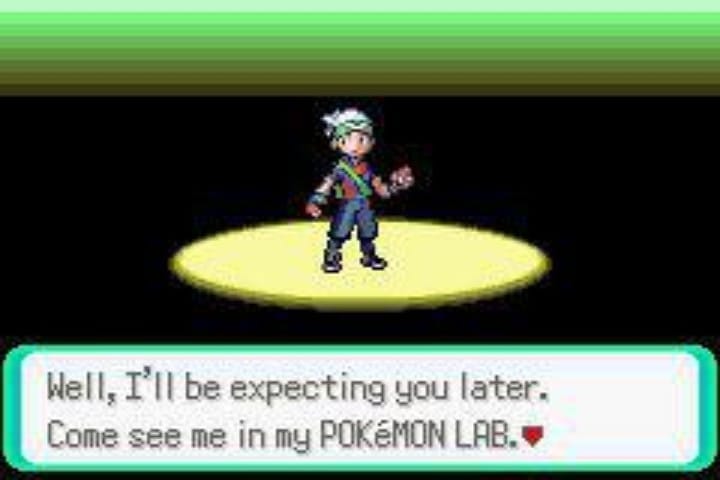
Graphics
“You're your father's child, all right. You look good together with Pokémon!”
Thankfully, the art team had no such issues as the writers. Generation III is bright and beautiful, without a doubt. Most of the areas are vibrant and bursting with color, which helps breathe some much-needed life into Hoenn.
The Pokémon in Generation III are also a treat to see. Finally, these pocket monsters get their first taste of a wide range of colors, far more than could be seen in Generation II on a Game Boy Color.
Now, for players who went through Ruby and Sapphire like I did, you’ll be sad to know that you don’t get any character animations like you did in Crystal Version. This bothered me quite a bit back then, since I thought it was a really neat addition. However, Emerald Version brought these animations back, which I didn’t realize until playing it this month. Sure, it’s something small, but it helps the battles feel that much more lively, which is pretty crucially important!
What did not return, however, are different sprites. Generation III has all the same sprites for every Pokémon, regardless of version. This is in stark contrast to Generation II, which had two sets of sprites for Gold and Silver Version then mixed and matched them for Crystal Version. Again, it’s not a big deal, but I’d be remiss not to mention it. I understand how much work it’d be to redraw so many sprites, but nevertheless it’s kinda lame that they couldn’t make it work.
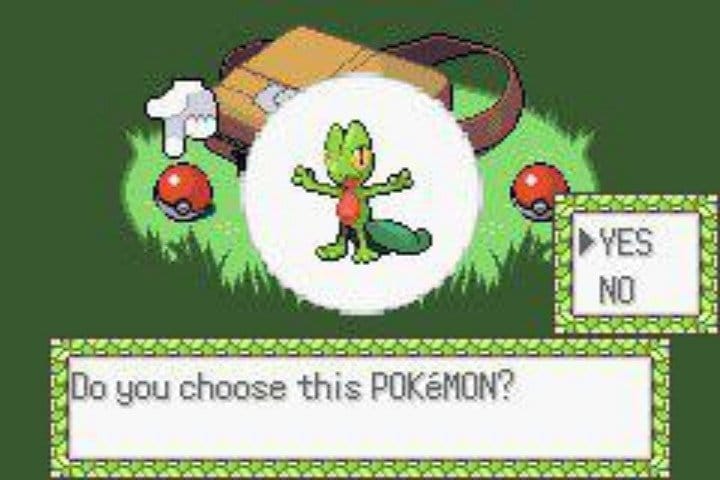
Attacks also saw a big upgrade, which helps serve to liven the battle much like the Pokémon animations. It’s exciting to see your moves with so much more variety than what was found in previous generations!
Like I said, the art team was using the better hardware of the GBA to the best of their ability. Sure, we didn’t necessarily get things like double the sprite amount or animated Pokémon (until Emerald Version) but overall the game looks great. The new Pokémon are well-designed and the environments really pop with color. I definitely enjoyed the look of Generation III!
Sound
“Oh, don't be that way.”
It’s very well-known by now that the Game Boy Advance doesn’t have the best sound chip in the world. Music from that system sounds very tinny and rough nowadays, but despite that, the system does have some good music. Thankfully, that’s… mostly true of Generation III. Listening to these tracks with headphones is tough. Not because the music itself is bad, but the quality of what Junichi Masuda was working with just isn’t really up to snuff anymore.
Now, some tracks are perfectly fine. The Trainer Battle, for instance, is my go-to battle theme for each game in the series and Generation III sounds very good despite the hardware it was made on:
https://www.youtube.com/watch?v=-cQKhYFFxLc
On top of that, the theme for when you fight either Team Aqua or Team Magma is really good too. It leans into the strengths of the GBA as much as it can to make an exciting battle theme:
https://www.youtube.com/watch?v=krT_5sVlzx0
However, not all is well unfortunately. Again, I have no doubt in the talent of Masuda. His work on the first two generations is proof enough that he’s a great composer. However, those have the benefit of sounding nice and chiptune-y nowadays. The GBA, however, has no such luxury. Normally, music should make you feel something related to the game.
However, certain tracks in Generation III had me feeling like I was just listening to each individual instrument close together instead of a harmonious blend of music. It’s hard to describe, but I know a track that exemplifies what I mean best:
https://www.youtube.com/watch?v=6sCKUi2uMzs
It’s hard to pick “desert” out of this. All I hear is the main melody, then the drums off to the left, meanwhile what I imagine is the low-quality bass is playing to the right. It doesn’t feel nearly as cohesive, despite the fact that the sound chip is technically better than that of the Game Boy. Again, it’s not a dig at Masuda; I love the man’s work most of the time. Unfortunately, you gotta work with what you got, and what he got was not really up to his standards.
I also just want to clarify that I love the GBA as a console. I adore it, it’s got an incredible library that does, indeed, have great music. However, the audio quality is hard to ignore sometimes, and Generation III sometimes toes that line.
Gameplay
“You'll need to be persistent.”
Thankfully, Generation III does have decent gameplay to back up the game. The foundation is still the exact same as it’s always been. To start, you pick one of three starters, you catch wild Pokémon. You can only hold six at a time, and the rest that you catch are sent to the PC in the Pokémon Center for you to use at your leisure.
You go from town to town, battling Trainers and Gym Leaders in hopes of taking on the Elite Four of Hoenn to be crowned Champion. Not much has changed there other than the addition of various Pokémon, as one would expect. However, there are still some key additions to discuss!
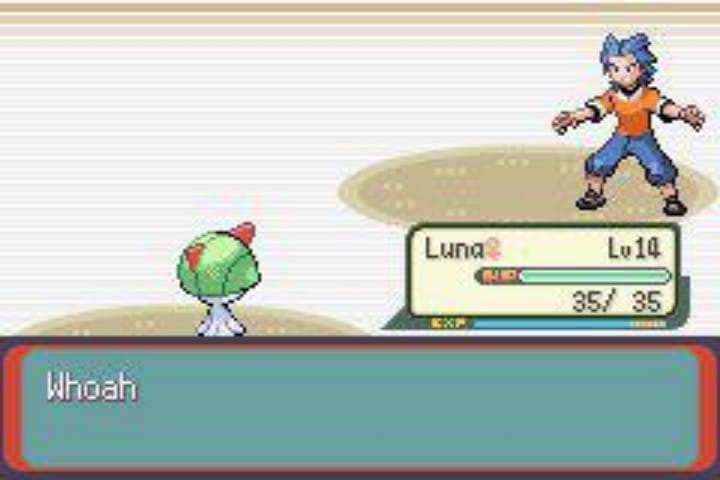
The first thing is the addition of Natures. From here on out, every Pokémon you encounter will have a certain Nature. This Nature affects two stats; each Nature will raise one stat and lower another in return. In casual play, this doesn’t have much meaning. However, for competitive players, it adds another layer of depth and strategy to the game in terms of raising the perfect team.
The second change comes in the form of new HMs. Unfortunately, Whirlpool gets knocked down a peg in Generation III. However, taking its place are the new HMs Rock Smash and Dive. Rock Smash, which used to be just a regular move, does exactly what you think it does. Dive, similarly, does exactly what it says on the tin. However, this leads me into one of the rather large additions to Generation III: underwater travel.
In what would become one of the most famous Pokémon memes, yes. Generation III introduced too much water. A large portion of the map can be traversed normally with Surf. However, should you have Dive, you can dunk yourself under the surface and travel the sea that way as well. This generally opens up hidden areas of routes above the surface, and usually leads to rare items. Also, this is when Dive Balls become useful. Speaking of which...
The third major addition are the new types of Poké Balls that you can use in battle. The Premiere Ball is… exceedingly stupid. It’s a regular Poké Ball with a new coat of paint. Lame! Next is the Repeat Ball, which is 3x as useful when trying to catch a Pokémon that’s already been caught in your Pokédex. The Timer Ball becomes more effective the longer a battle has taken place (such as a legendary battle, perhaps…)
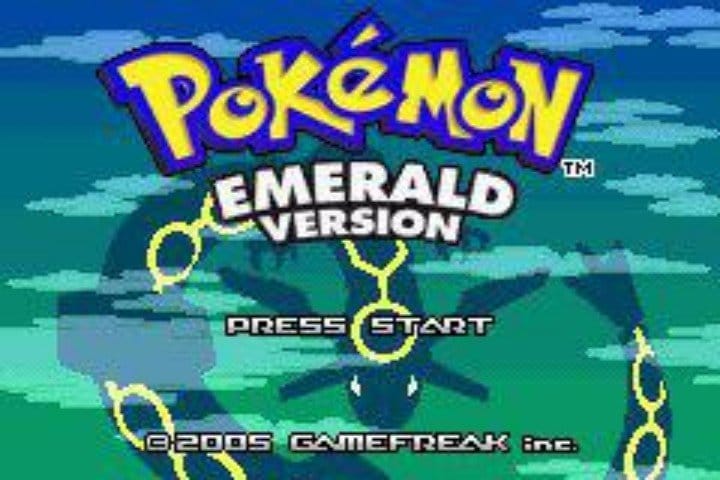
On the list next is the Nest Ball, which is better at catching lower-level Pokémon. After that, the Net Ball is 3x effective at catching Water or Bug-type Pokémon. The Dive Ball, which I mentioned before, is 3.5x effective at catching Pokémon when you’re underwater. Finally, we have the Luxury Ball, which has the same catch rate as a regular Poké Ball. However, the caught Pokémon will start with a higher friendship level than normal when using it. Neat!
I know what a lot of you are thinking: “What about the contests and the secret bases? What about the Battle Frontier?!” Don’t worry, I didn’t forget about them. They’re side content, so I’ll make sure they get their time in the next section. For now, let’s talk about something fun and exciting! Like say, Brawly and his stupid team of mutant freaks that are inhumanly powerful?
Look, Generation III is not too difficult. It’s a nice, relaxing experience for the most part. You know what isn’t relaxing, though? Brawly the Fighting-type Gym Leader. His team sickens me. His Pokémon are ridiculously high level for where he is in the game, and even then the team is so strong it’s sickening. I used a Psychic type and a Flying type against him, and both of them got one-shotted. I lost to Brawly four times. Try to recall ever losing to a Gym Leader four times. Go on, I’ll wait.
Well, I don’t have forever, so let’s move on. Aside from that, battles in Generation III are often a cakewalk. It’s worth noting that I played Emerald Version, which actually did up the difficulty of Gym Leader teams, but aside from Brawly I had little trouble. I can only imagine how braindead easy Ruby and Sapphire were. Maybe that’s why I put the game down so long ago!
That was my issue though. I’m not saying that many of the games are even that difficult, but Emerald Version in particular did not feel challenging to me in the slightest (aside from one instance, where they apparently chose to put all the game’s difficulty).
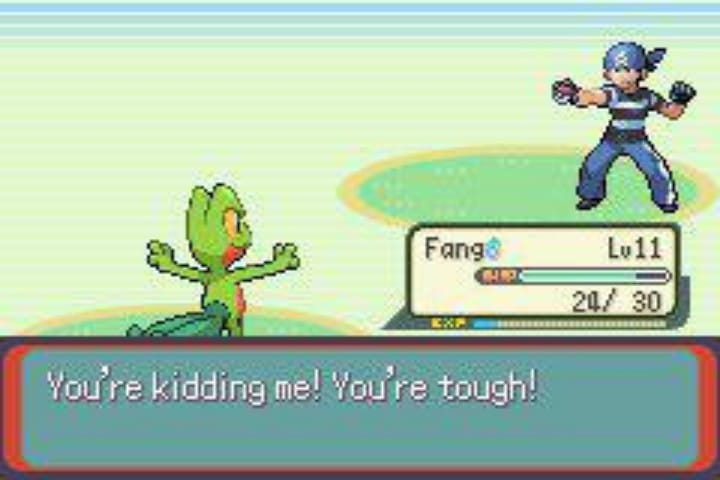
One change from Ruby and Sapphire that I did enjoy, however, is that in Emerald Version, you don’t fight Team Magma or Team Aqua. No, you instead fight Team Magma and Team Aqua. This adds some length to the game while making you feel trapped in the middle of a nasty turf war, while setting up the story for the third legendary Pokémon, Rayquaza.
Finally, Generation III saw the introduction of Double Battles. Double battles are a fight against two Pokémon at once, using two of your own. This changes the dynamic in certain ways, as using certain moves can hit one Pokémon, both of them, or even all three. Yes, if you’re not careful you can commit friendly fire on your own team. Be careful!
These changes to the formula did help Generation III out overall. I will say that I liked the gameplay from Generation III and I enjoy these new additions. That being said, I just didn’t feel the excitement like I did in Generation II. I will say that I had more fun playing this now than I did 14 or 15 years ago, but it still doesn’t reach the highs of the previous Generation for me in terms of raw gameplay elements.
In a sense, that’s to be expected; with everyone thinking Generation II would end the series, they put everything into that game. However, once they realized they’d be making these until the end of time, these next entries didn’t feel like they had nearly as much innovation, even if they did have quite a bit.
Extras/Replay Value
“Good! Good! You seem to be quite happy!”
Generation III has quite a few extras to mess around with. Some are new, some are returning features, and some are still mostly unique to the Hoenn region.
First off, we have the Battle Tents. Three of these tents pop up in the game. The first can be found in Slateport, the second in Verdanturf, and the third in Fallarbor. Each one provides a mini challenge that nets you an item upon three rounds of winning. These all play around with battles in various ways, and are in fact training for something much bigger that we’ll be discussing in a few paragraphs. These neat little snapshots of what’s to come are pretty harmless, and I like the way they break up the combat for a bit.
The second activity are the Pokémon Contests. In this side content, your Pokémon’s moveset takes on a whole new type and you have to gussy them up as best you can! Instead of an elemental type, moves are assigned different characteristic types. You can enter a Pokémon into one of five categories: Coolness, Beauty, Cuteness, Cleverness, and Toughness. The goal is to get first place in one of these categories in order to win prizes! This is entirely optional and while I think it’s fine for people to do, I didn’t personally enjoy it. It wasn’t substantial enough for me to get totally invested, so I mostly ignored it for my playthrough.
As much as I like the idea of the Secret Bases, this same ignorance remains as true for that as for the contests. Secret Bases can be set up in a huge number of places around Hoenn, though you can only have one at a time. Once you get Secret Power (TM43), you can convert a large amount of spots to be your Secret Base. You can decorate your base as you see fit, which is neat.
Where the Secret Base becomes really cool, and sadly not something I got to mess around with this time, is when you connect with a friend. This mixes your records with your friend and you can enter each others’ Bases. If you enter their Base, you’ll find an NPC that acts as the owner of that Base. Once you beat the Elite Four, you can battle this NPC, which has the party your friend had when you exchanged Bases with them. This is pretty neat, but again, not something I got to mess around with. As such, I was quickly bored with the Secret Base.
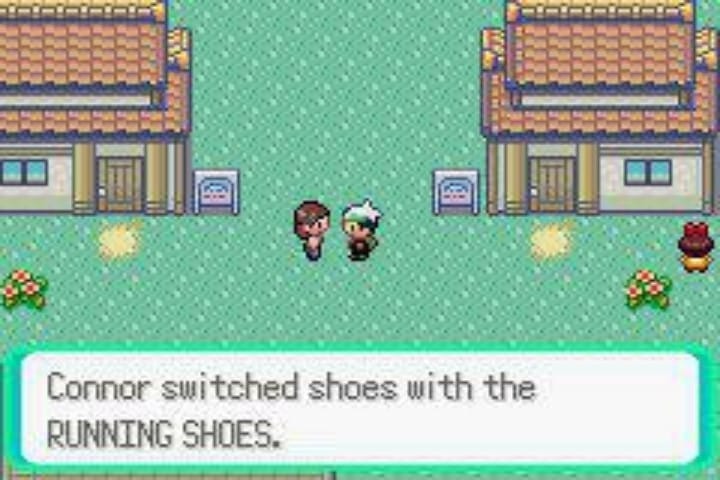
What I did not get bored of, however, was the Battle Frontier. In Ruby and Sapphire, the postgame consists mainly of one thing: the Battle Tower. Making its return from Crystal Version, the Battle Tower has three modes to play: Single Battles, Double Battles and Multi Battles. We’ve discussed Single and Double Battles, but Multi Battles are just Double Battles with a slight difference. Either you can use two of your own Pokémon, or you can team up with a friend and use one Pokémon each.
You get two tiers of rewards: for 7-35 wins in a row, you get one of the various stat-boost items at random. Above that, you can get a bunch of different items at random. They range from one-time use items such as a White Herb to items such as the King’s Rock, which is both used to evolve a Slowpoke into a Slowking and can be held to make opponents flinch.
That about wraps it up for Ruby and Sapphire, but thankfully someone had a lick of sense in them when it came to closing out Generation III. Exclusive to the Emerald Version, the postgame is hugely expanded. The Battle Tower? That is one of seven activities in the Battle Frontier. Each of these seven buildings has a Frontier Brain, the equivalent of a Gym Leader. You have to beat these challenges twice to get both the Silver and Gold Symbols from these Brains. The requirements/win streaks necessary for each of these symbols varies from building to building.
The Battle Palace is the next stop on the Frontier. Here, you don’t actually control your Pokémon at all; they’ll fight Trainers with no input from you. Depending on your Pokemon’s Nature and how much HP they have, it’ll use different moves. It’s an interesting setup. It’s not my favorite, but at least it’s there for people that like it!
Moving along to the next area is the Battle Factory. This will seem familiar to anyone who played Pokémon Stadium without the Game Pak addon so you can import your team from the Game Boy games. Here, you’re given a random Pokémon party. Unlike the Stadium games, you don’t get to pick your party. After you beat a Trainer, you’ll be told a bit about the next Trainer. You can then decide to swap out one of their Pokémon with one from the previous Trainer’s set. That makes this one a lot more interesting than the Palace, to say the least!
Perhaps my favorite of them all, the Battle Pyramid comes next. This is essentially a roguelite version of a dungeon. The Pyramid consists of seven floors, and each floor starts off completely dark. The room is lit as you fight more Trainers in the level, and you must find the blue tile on the floor to advance. You can’t bring any items into the Pyramid with you, instead using a Battle Bag that can only hold ten items. Items are scattered around the Pyramid, and as long as you keep winning, you can keep these items and carry them over through the next level. If you lose, however, you lose everything in the Bag except a Hyper Potion and an Ether. You’ll also be facing wild Pokémon in the Pyramid, so exercise lots of caution when entering here. It’s tough, but it’s a lot of fun.
Next on the list is the Battle Dome, which is a Sweet 16 tournament for Trainer battles. You must face off against four opponents to be the champion of the tournament. Each round, you get information about your next opponent which you can use to your advantage. This one is pretty standard, with not much to talk about. It’s fine, it just feels like a shorter Battle Tower which isn’t too bad.
After that, we come to the Battle Arena. This is much different than a normal battle. Here, one Pokémon is pitted against another for only three rounds of battle. If a Pokémon is knocked out in those three rounds, they’re automatically eliminated. If they both survive, then they’re judged on three aspects: Mind, Skill and Body. Mind judges points based on if you used offensive moves or not. Skill is determined by how accurate your attacks were in battle. Body is simply counting if you have more HP than your opponent. Whichever Pokémon has more points, wins the round. This one is certainly worth messing around with, but it still can’t beat the Pyramid as my favorite so far!
Finally, we arrive at the Battle Pike. This Seviper-looking building tasks you with enduring seven rooms of total randomness. Each time you enter a room, you’re given a choice of three doors. There are eight possible outcomes depending on which door you choose. You can be thrust into a Single Battle, a Double Battle, a room filled with wild Pokémon, or… nothing at all. However, you can also get a room where one or two of your three Pokémon are recovered, one where your entire team is healed, one where you get a random status effect on one or more of your team, and finally a tough Single battle that heals you when you’re done. That brings us to the end of the Battle Frontier's main activities!
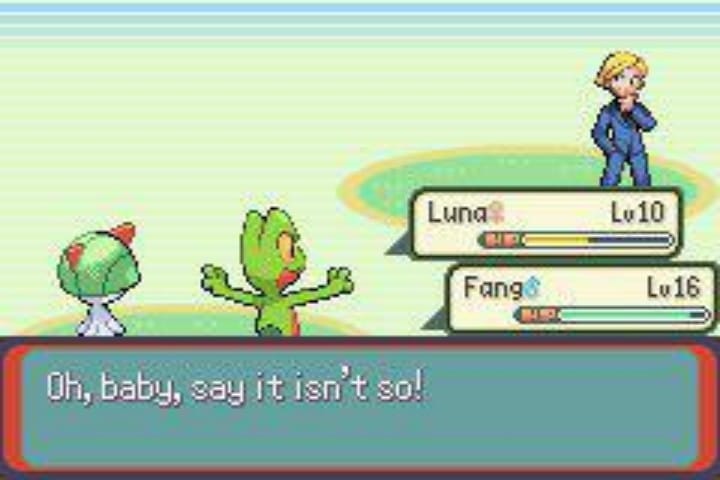
You receive Battle Points from each of these events, which can be spent on a number of things at the Frontier. You can exchange BP for a ton of items, and even a bunch of attacks from Move Tutors as well. It’s a great reward for going through the Frontier, as it encourages you to continue trying these activities with your new abilities.
While I was mostly disappointed by the postgame content in Ruby Version, I applaud Game Freak for remedying the problem in Emerald Version. The Battle Frontier is loads of fun, and I had the most fun in the game doing these various challenges. Bravo, Game Freak.
The Final Word
“So, did it work out?”
I admit that I probably didn’t give Generation III a fair chance back when I first played it. I just wasn’t into it very much when I tried Ruby Version. Looking back on it now, I must say that I appreciate Generation III more than I did previously. It did add a lot of new ideas to the formula, which I totally respect.
However, much of that side content just didn’t mesh with me. The Contests were kind of boring, the Secret Bases were basic in design, and in general I was just sad that we didn’t get to jump back into Johto or something. That being said, the Battle Frontier makes up for a lot of my gripes about the postgame. It’s a fantastic addition that gives you so much to do, it makes my head spin. Whoever thought of that postgame deserves a raise, because I had so much more fun with the different gameplay styles!
So that’s where I stand with Generation III now. It’s really not as bad as I remember it being, which is a good thing! Sadly, though, it still falls pretty short in my list of favorite generations. I will say that this replay may have put it above another generation in the series, but I’ll have to revisit that thought when I replay that one...
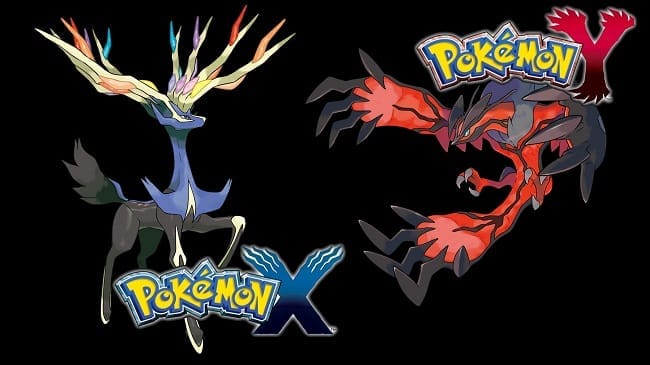
Have a tip, or want to point out something we missed? Leave a Comment or e-mail us at tips@techraptor.net
